|
Getting your Trinity Audio player ready...
|
Introduction
Outdoor adventures are on the rise. Due to a combination of factors like internal US migration, the Covid-19 pandemic forcing domestic travel, and remote work allowing for more geographic flexibility, people are getting out into the wild at a faster clip than before. Along with this rise comes the potential to overstrain local EMS and search and rescue services. While nothing can replace the knowledge gained from a First Aid or WFA (Wilderness First Aid) course, once you have the skills, you’re going to need a First Aid setup that suits your needs. Enter the My Medic kits, which are some of the most complete and situationally sound products available on the market.
Today, we’ll be reviewing one of their products, the Hiker Medic set, designed for hiking specific injuries. We’ll break it down and assess the usability of the pack per its designed function. Let’s get to it!
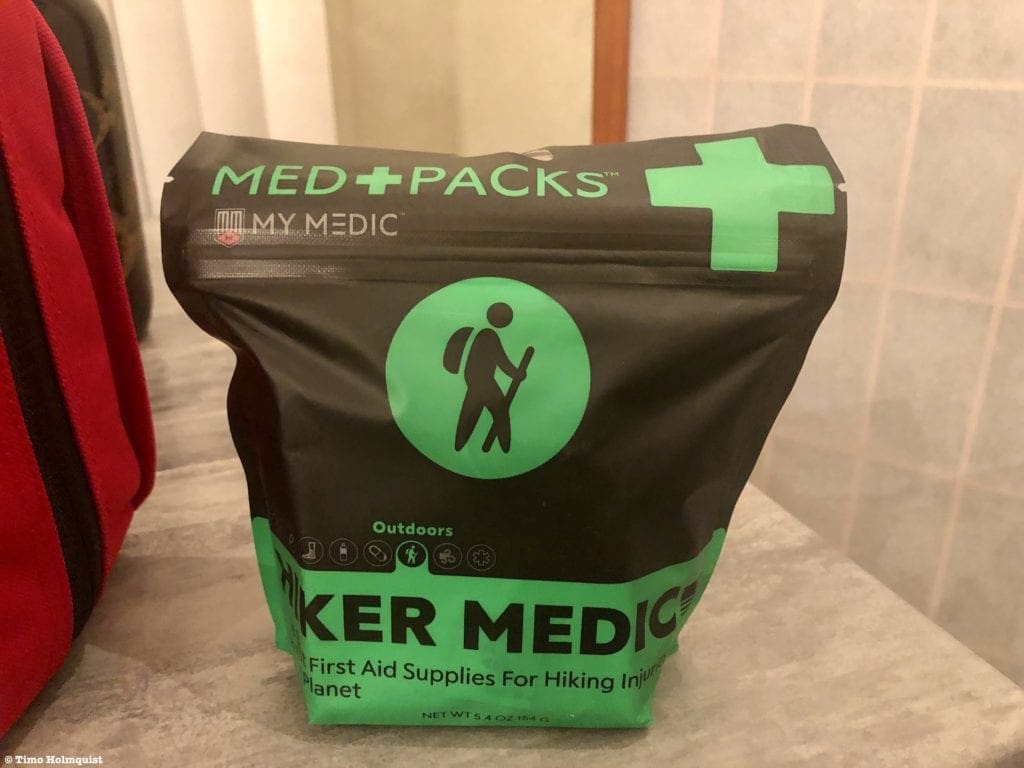
Hiker Medic Medpack by My Medic.
Table of Contents
- Importance of First Aid Kits and Medical Training
- Hiker Medic: Overview and Contents
- The Outside: Pros and Cons
- The Inside: Pros and Cons
- Final Thoughts
- Resources
Importance of First Aid Kits and Medical Training
When traipsing through beautiful wilderness areas, injury is usually one of the farthest thoughts from our minds. Many of us don’t want to think about the possibility of injury because that would put us in a position where we have to assess injury severity, what we can treat onsite and how far we are from medical help –all scary thoughts. However, it is precisely because of these reasons that coherence in outdoor activities needs to build from a medically sound base. You don’t have to be an EMT to successfully deal with injuries in the wild, but you will need to know how to assess a situation and apply appropriate solutions to it. The ability to think coherently in a wilderness medical situation is why ANY type of professional medical training puts you at a comparative advantage in the field.
There are different strata of training that correspond to the severity of what you may encounter. Sometimes the price can be a strong detractor, but you can always utilize a less expensive course and supplement your knowledge along the way. The point is to get the training. The options range from simple first aid training to complex wilderness first responder training. I’ll include some links below to set you on the right path, but I cannot recommend appropriate training enough. With the knowledge in your head, you’re automatically in a better position to not only understand what your medical kit has but how to use each treatment option within it.
Medical Training Options:
- Simple First Aid & CPR Training: American Red Cross, American Heart Council
- Wilderness First Aid (WFA) Training: NOLS, Wilderness Medical Associates, SOLO
- Wilderness First Responder (WFR) Training: NOLS, Wilderness Medical Associates, SOLO
You may notice that WFA and WFR courses feature the same companies. A WFA is NOT a WFR; the latter is much more comprehensive (and pricier). A WFR is usually enough to get you hired as a guide or guide equivalent position at an outdoor company. Some specialized mountain careers require more than what’s listed above, but for dedicated recreationists, A WFA is probably adequate.
Once you have some basic medical training, you’ll be better prepared to handle a diverse range of situations that can occur in the outdoors. The second component is having the right medical equipment at your disposal. The medical kit and the medical training work best together. Training doesn’t guarantee success if you don’t have the right equipment and the right equipment means little if you don’t know how to use it.
Assuming we have a basic understanding of how to treat injuries, let’s dive into the contents of the product we’ll be reviewing.
My Medic Hiker Medic: Overview and Contents
- Weight: 5.4 OZ
- Dimensions: 6 inches wide, 5 ¼ inches tall, 2.5 inches wide at the base (when full)
- Pieces: 32
- Use: For the most common injuries sustained while hiking
- Price: $24.95
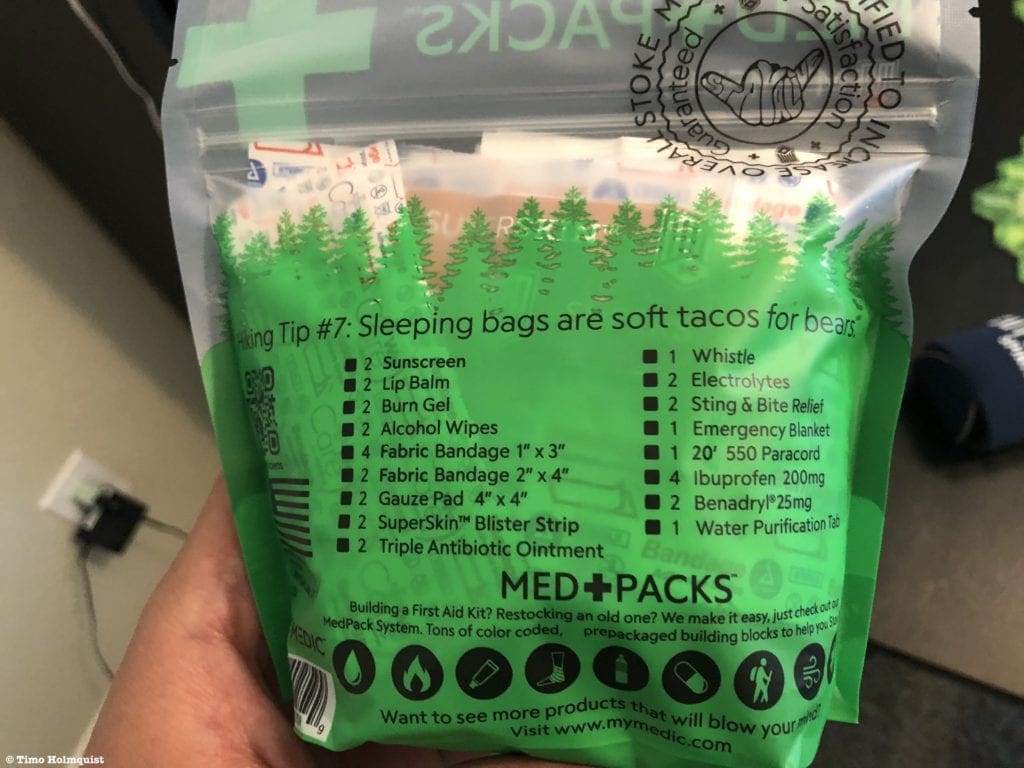
Back of the My Medic Hiker Medic Medpack
The Hiker Medic is advertised as the solution to your most common injuries while hiking. At a light 5.4 OZ, it’s a small and convenient package that can be stuffed into a variety of spaces within a day or overnight pack.
The contents are listed clearly on the back for easy reference. A quick glance lets you know roughly what types of injuries this thing can handle. In no particular order, they are sunburn, topical burns, small cuts and scrapes, blisters, headaches, energy depletion, bug bites and stings, hypothermia (emergency blanket), and dehydration (water purification tablet).
The Outside: Pros and Cons
Before opening it, let’s take a look at the back, where some useful information is already presented. You have your requisite contents listed out, along with their frequency and bandage dimensions when applicable. Below the listed contents are a couple of sentences explaining that while the Hiker Medic is a solo product, it can also be used to replenish existing first aid kits or help build a larger one. On the webpage for the Hiker Medic, if you scroll down below the product description, they have color-coded drop-down menus detailing what the pieces in the package are typically used for (bleeding, burn, topical, etc.). I found this to be a helpful addition and easy to navigate.
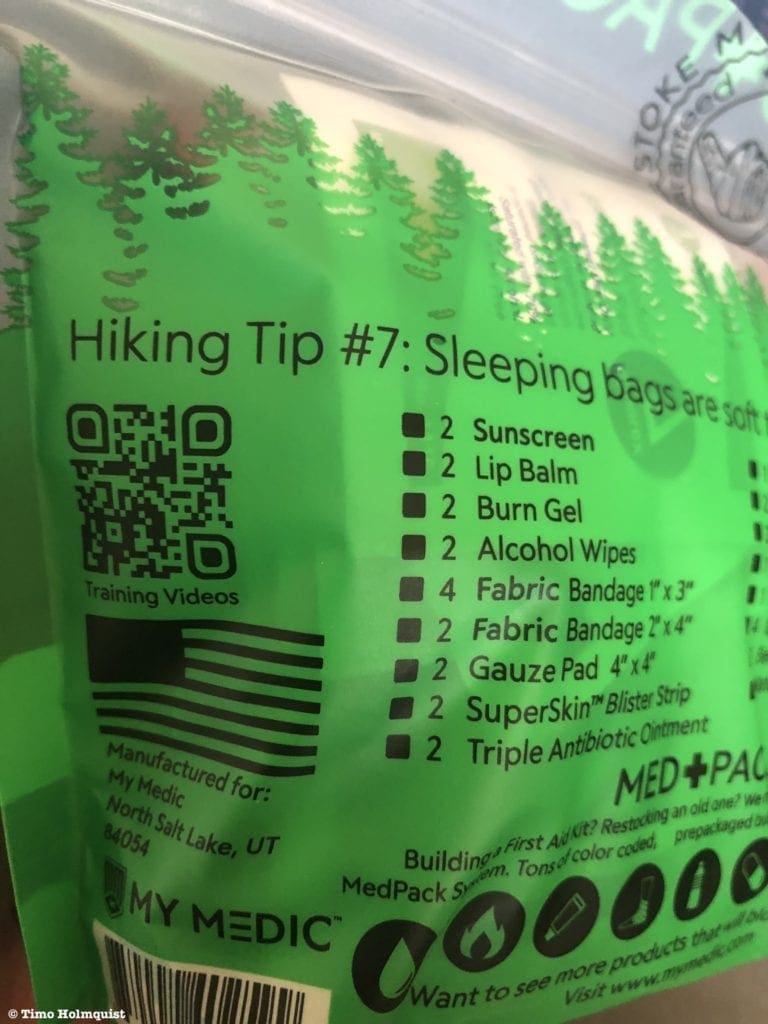
QR code and manufacturing information
To the left of the listed contents is a QR code that supposedly leads to training videos. It’s a little hard to focus a phone camera on it because the code is on the edge of the bag, but it’s a minor inconvenience. The QR code led me straight to a pop-up advertisement window that claimed access to free first aid training if I signed up for My Medic’s newsletter. Once I exited out of that, I was redirected to a support page of the website. I poked around for a bit but couldn’t find training videos. The menu is at the top right corner, and their blog has informative pieces, but there’s a bit of scrolling involved. All in all, I think the QR code is a cool idea but pretty misleading. I could find training videos by searching Youtube in less time than it would take me to navigate the site from the QR code, plus I wouldn’t have to sign up for a newsletter.
They also have Hiker Tips listed on the back which are…ok? I mean, the one on this particular product isn’t even a tip. Printing out “Sleeping bags are soft tacos for bears” will, at best, create a small chuckle, followed by panicked confusion when you start wondering how often bears eat sleeping bags because they think they’re soft tacos. It’s there, it’s harmless, but it’s not informative.
The Inside: Pros and Cons
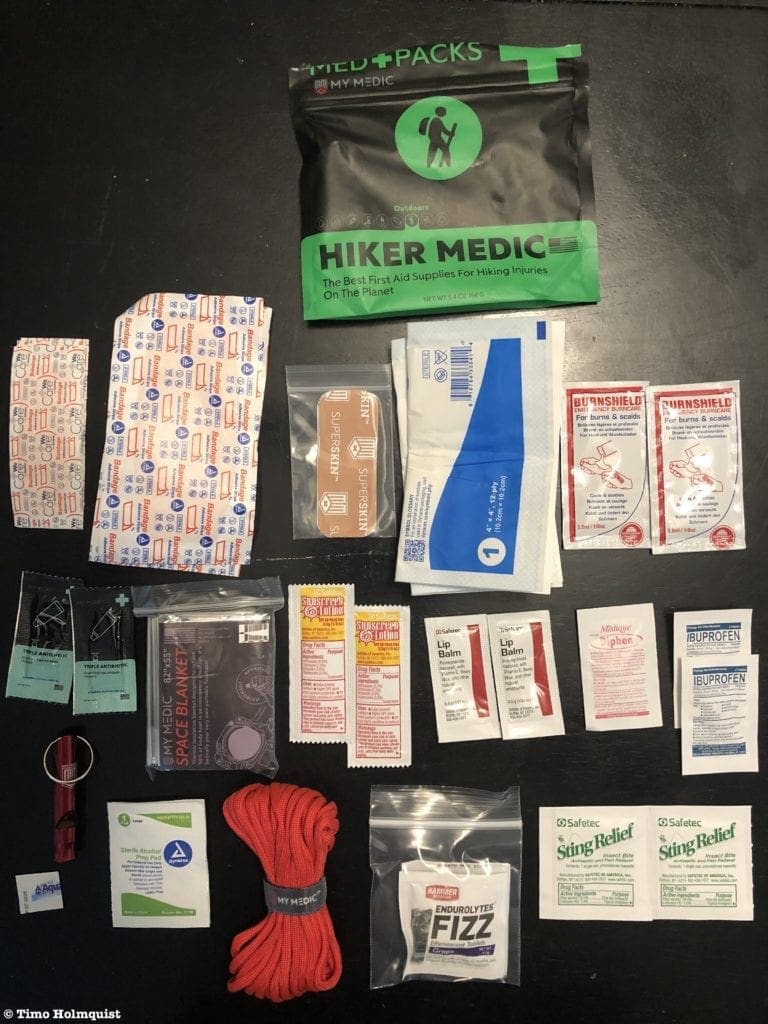
My Medic Hiker Medic with contents.
All of the pieces look in good shape, and I particularly like how the emergency blanket is stored and the quality of the whistle. I’m also a fan of having 2 sunscreens instead of 1, especially if you are on an overnight trip and forgot to bring some. The electrolyte packets are a nice touch as well. The bandages and gauze are all pretty standard fare for a first aid kit. All in all, easy to poke through and figure out what’s what.
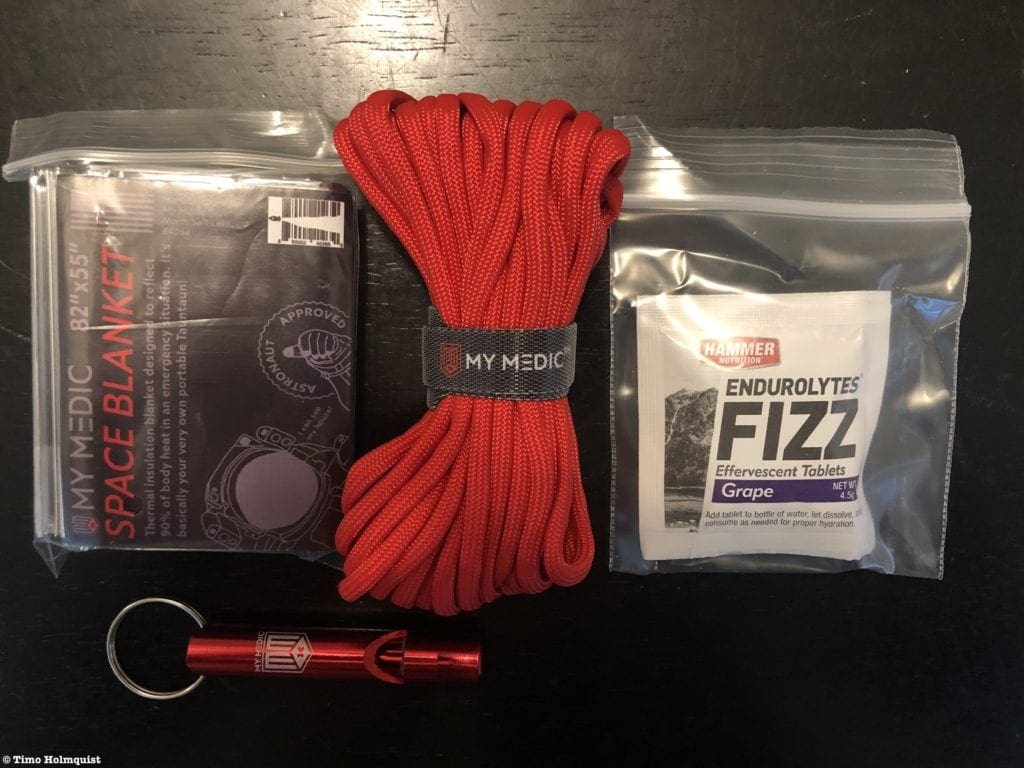
Pieces I like.
There were, however, a couple of issues with the items in my pack. Mixed messaging was probably my biggest gripe with the pack because it came up in a few different ways. The first issue was with the water purification tab. Below is a picture of what I received.
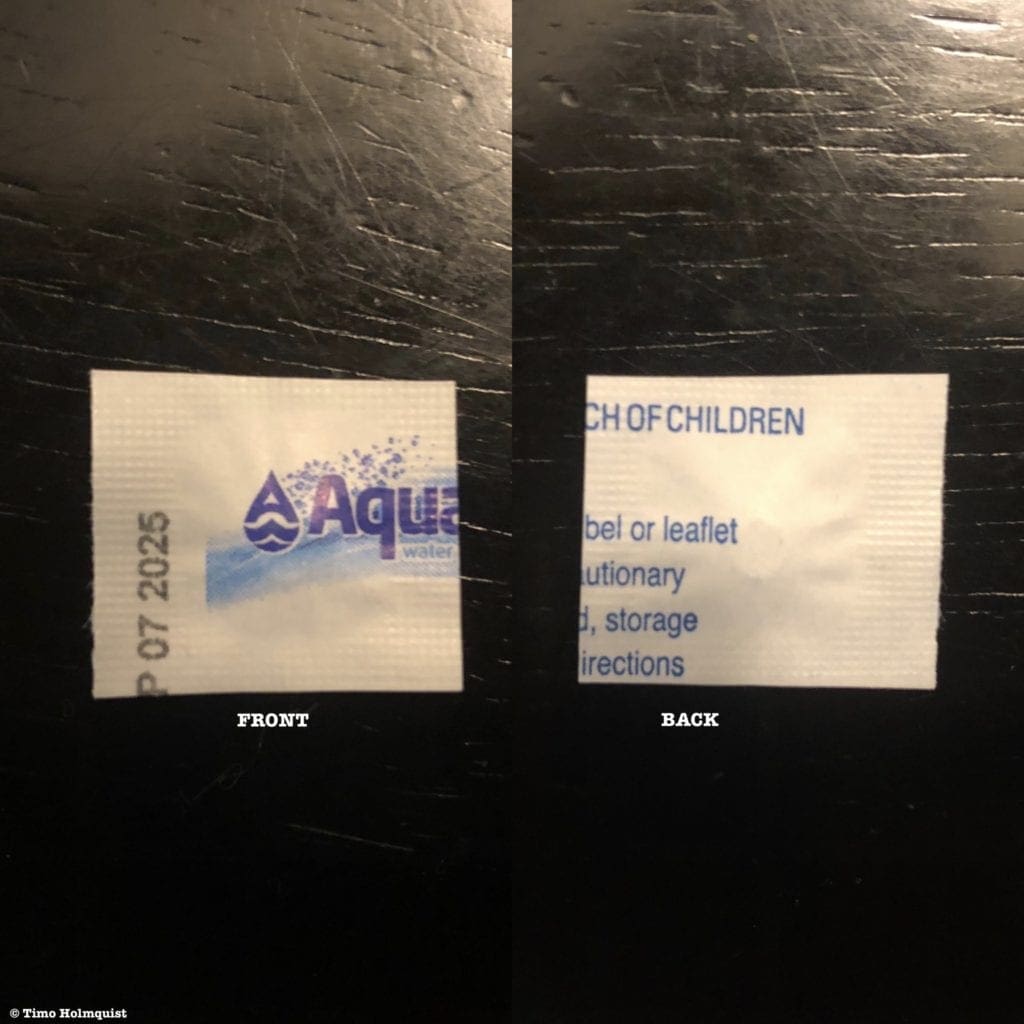
Photo of the Aquatabs
It looks like the original packet came with possibly 2 or 4 tabs, and someone cut it down to 1. Only part of the brand is showing, and in my case, you can’t make out any instructions, which I think is a pretty big miss. I popped over to the My Medic website to see if they had any more information. The picture of the product online is complete and is described as a “chlorine tablet used for water purification,” but there’s no indication of how to use it correctly. I had to go onto the Aquatabs official website and scroll around for a few minutes before finding out that it takes 30 minutes for 2 quarts to purify. None of that information is available in or on the Hiker Medpack. If this is your first time using water purification, that seems like information you’d want to have.
Another smaller messaging issue had to do with continuity. There are 2 alcohol pads, 2 Ibuprofen packets (with 2 pills per packet), 2 Triple Bac Ointment packs, 2 Sting Relief packs, 2 sunscreen packets, 2 Burnshields, and 2 Lip Balms, but only 1 Diphen (allergy medicine). I personally thought it would’ve been better with 2… but that actually led me to my biggest messaging problem with the pack. Look at the contents again.
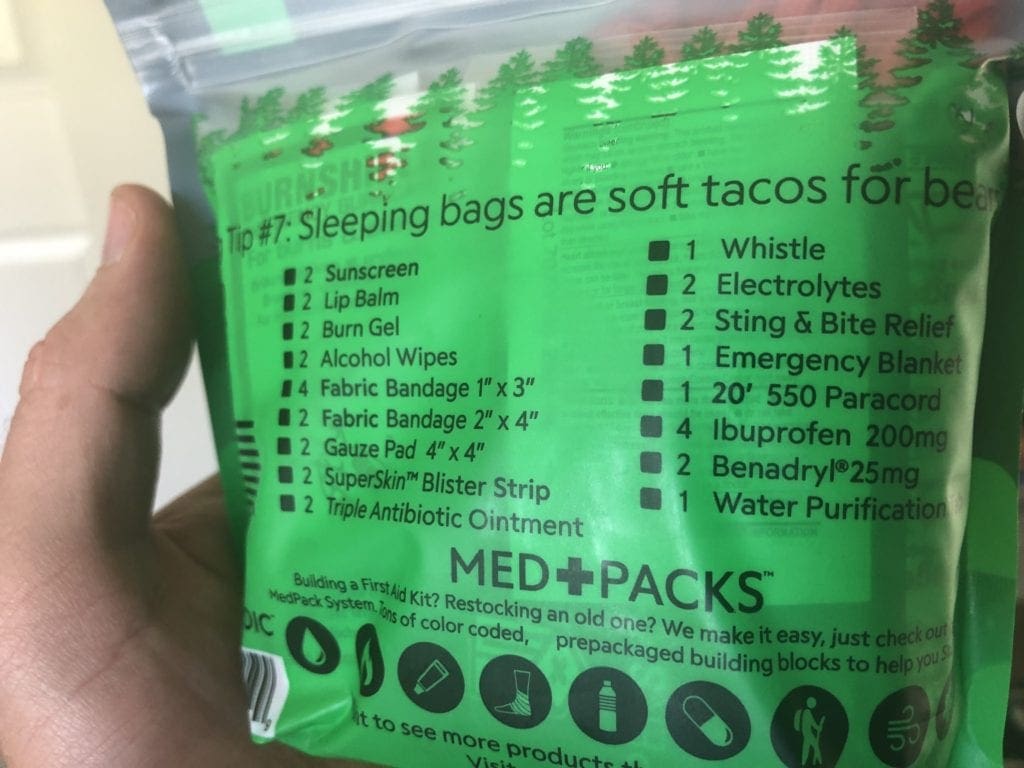
Contents label on the back of the Medpack.
Diphen isn’t listed there. It says 2 Benadryl at 25mg each. Now, Diphenhydramine is the active ingredient in Benadryl, but nowhere is this mentioned in or on the pack. Take a look at the products I found inside my pack the first time I opened it.
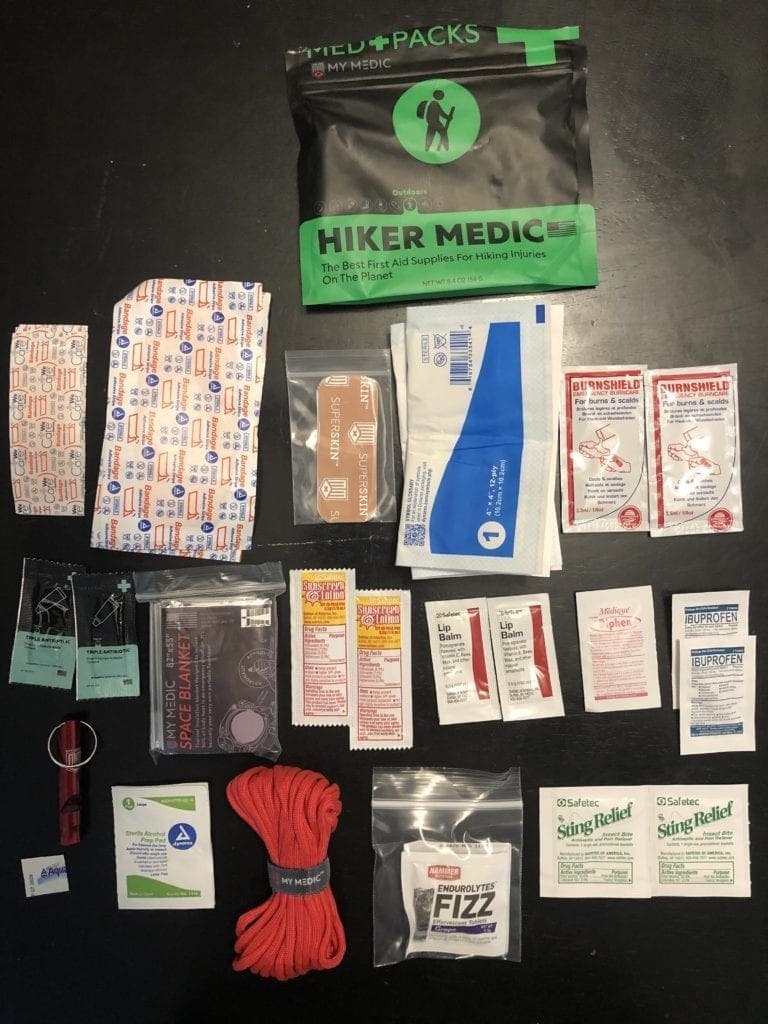
Items in my pack, no Benadryl.
In a photo of the package contents on the My Medic website, a Benadryl packet is clearly visible with the trademark symbol next to the title; click here to see, but only 1. The listed contents online also indicate 1 Benadryl per pack. So, either the 2 Benadryl listed on my pack is incorrect, or the website is incorrect. If you open this Medpack for the first time in the wild without cell reception, the last thing you’d want to find is missing items, either because it’s not the brand you saw listed or the quantity is misprinted on the back of the pack.
Is this a big issue with My Medic? I’m not sure. Maybe I just got a bad pack. Unfortunately, I did receive one that was not as advertised, and it would be remiss of me not to mention it.
The messaging issue is a big deal because with memorable packaging, clearly listed contents, and a Medpack that laser focuses on hikers, my first reaction was, “ok, so this is a complete pack for hiking use.” And while it’s always a good practice to check the contents of these things beforehand, a lot of the time, we grab what we think works or what’s reviewed highly online and head out. Hikers juggle many variables before committing to an adventure: weather, supplies, energy, drive time, elevation gain, difficulty, terrain considerations, and trail mileage, for example. With all those concerns (and a slew of others I’m forgetting), the last thing you want to find is that the Medpack you dropped $25 on is mislabeled or incomplete.
The presentation is also a bit helter-skelter, more of a stuff sack of items than organized. I did a speed test, picked a random item (sting prevention), and timed how long it took for me to find it. The result was 17 seconds, and half the contents taken out. On a large table like the one I was using, that’s fine. In the outdoors, make sure you sweep your area when you’re done to make sure some of the smaller items didn’t fall to the ground.
I also think the pack would’ve benefitted from some additions. More bandages (6-8 instead of 4), medical tape for the gauze, more blister prevention (it’s a perennial problem with hiking longer distances or with larger packs), and a small tweezer for splinters and (in areas that have them) for pulling ticks. While the Hiker Medic Medpack can stand on its own, I’m certainly going to be adding other items to it before considering it as my primary hiking kit.
Picture of the front side. It says, “The Best First Aid Supplies For Hiking Injuries On The Planet.” I disagree.
Final Thoughts and Rating
If I was to give this pack a rating, I’d probably give it a 3 out of 5. Positively, all the included items are well packaged and ready for use, and I love the lightweight design and clearly labeled contents. Unfortunately, the Aquatab issue, Benadryl/Diphen problem, mislabeled quantities, and the QR Code not leading to training videos while trying to backdoor you into signing up for a newsletter kind of blunted the experience for me. There are consistent messaging issues here that I wish were resolved. I wanted to like the product more, especially since some of their other products, like the MyFAK kit, are supremely well assembled, but I think there are better hiker-specific medical kits out there.
Resources
American Heart Association. (2021). CPR & ECC. Retrieved from https://cpr.heart.org/en
American Red Cross. (2021). CPR Training. Retrieved from https://www.redcross.org/take-a-class/cpr
Aquamira. (2021). Aquamira Water Treatment 1 OZ. Retrieved from https://www.aquamira.com/product/aquamira-water-treatment-drops-1-oz/?v=e75edac1b83f
My Medic. (2021).
NOLS. (2021).
- Wilderness First Aid. Retrieved from https://www.nols.edu/en/coursefinder/courses/wilderness-first-aid-WFA/
- Wilderness First Responder. Retrieved from https://www.nols.edu/en/coursefinder/courses/wilderness-first-responder-WFR/
SOLO. (2021). Our Core Courses. Retrieved from https://soloschools.com/training-information/
Wilderness Medical Associates. (2021). Wilderness Medicine Courses. Retrieved from https://www.wildmed.com/wilderness-medical-courses/










